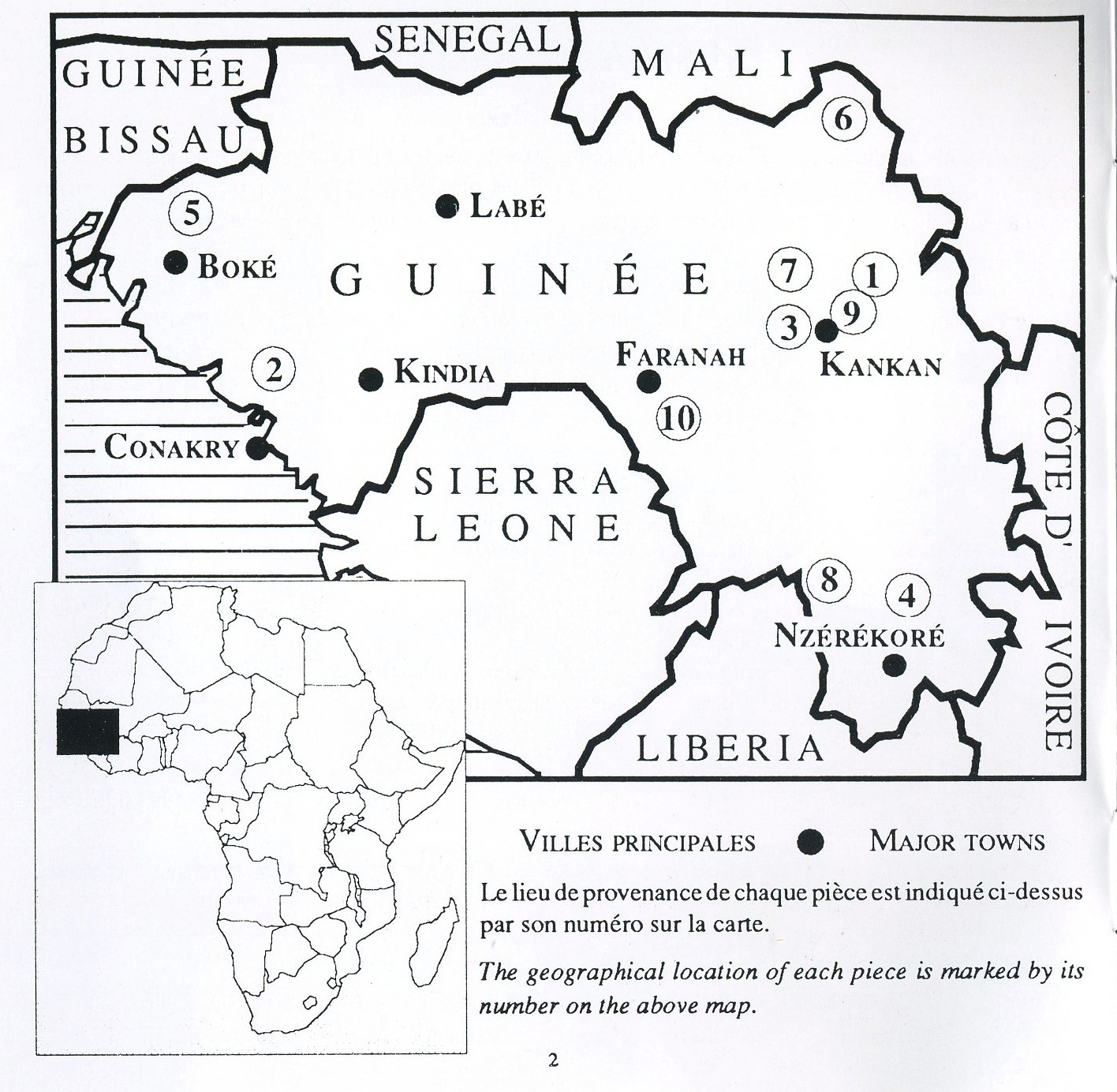jaa
Keita, Mamady. 1992. Nankama. Fonti Musicali, FMD 195.
(Djaa)

Région: Siguiri. Rythme: Malenke (no. 9 on map.)
Danse de la séduction. Elle est également la dernière danse de sa jeunesse que la jeune fille, la veille de son mariage, fera avec ses amis.
| Sara kuluyandon sara! Ee! | Finie la danse de la jeunesse, finie! |
| N'nale kuluyandon sara! Ee kuluya | La danse de kuluya est terminée. |
| Sara föliba, sara! Ee! | Finie la danse de la jeunesse, finie! |
| N'nale kuluyandon sara! Ee kuluya | La danse de kuluya est terminée. |
Keita, Mamady. 1998. Afö. Fonti Musicali, FMO 215.
(Djaa)
This was originally a dance for young girls who were learning how to seduce, but is today used as the finale for all types of festivities by young people of both sexes and is therefore accompanied by the drummers. Mamady plays the first solo, and then he sings "Eyo, eyo, when the crowd leaves everyone observes it for himself". The chorus repeats this, then he sings "I have returned. Do not cause shame for he who is successful. I am watching for myself. Elion observes for himself"; in the same way he names Sidiki, Didier and Sény. "What do you think? Everyone watches for himself." Seny plays the following solo, everybody repeat [sic] the singing with variations and Mamady plays the final solo.
Billmeier, Uschi. 1999. Mamady Keita: A Life For the Djembe—Traditional Rhythms of the Malinke. Engerda, Germany: Arun-Verlag.
(Djaa)
Traditional Ethnic Group: Malinke; Northeast Guinea (Kankan & Kurussa Regions)
In earlier times, Djaa was played without instruments, only sung and clapped by the young girls. Later, the rhythm developed into a dance of seduction that is now played at the festivities for young people. They form two semi-circles, with the girls on one side, and the boys on the other. The boy who leads the dance holds a scarf as a symbol of love and friendship. He jumps into the center of the circle and dances a short solo; then he selects one girls and puts the scarf around her neck. She also dances a solo and then chooses in turn another boy. This goes on for many hours. Through this dance the young people get to know each other and many marriages have been the result of this!
Another occasion for the rhythm Djaa is the evening before a wedding. The bride assembles all her friends one last time for the gathering called Djaa/laban, the "last dance of childhood."
The song says, "It is over, the dance of youth, the kuluya tanu is over."
Keita, Mamady. 2000. Balandugu Kan. Fonti Musicali, FMD 218.
(Djaa)
A feminine dance of seduction that could once only be danced by girls alone. It is now danced at every celebration.
| Mamady n'fa itè gbolola kariya | Mamady, my father, beat the skin faster! |
| Ee walende ee | Aha, he's gone. |
| Ailawuya lawuya ee, ailawulya lawuya, aimawuyaee | Your party, your party, didn't you see it? |
Bangoura, Fode Seydou. 2005. Fakoly 1.
(Djaa)
Djaa is a Malinke dance of seduction, but is also the last dance a young girl dances with her friends before her wedding. It comes from the Siguiri region.
Benkadi. 2006. Moné Mani. Leo Brooks, LB006.
(Djaa)
This popular rhythm originated from the hand clapping patterns and songs sung by young women in the village. It is a dance for the young unmarried men and women.
Keita, Mamady. 2007. Mandeng Djara. Fonti Musicali, FMD 231.
(Kedjula Kanin — Rythme: Kedju)
Songs of mockery again, but this time the boys answer the girls. This song is also one of those use [sic] to dance the Djaa (see fmd 218. Balangudu Kan), which is a dance of seduction that was once performed by the girls alone, but that today is now performed on every occasion for celebration.
| Kedjula kanin sunguru kedjula kanin mandinye | I don't like the friendship of an ugly girl |
Delbanco, Åge. 2012. West African Rhythms. Charleston, SC: Seven Hawk.
(Djaa Kouroussa)
Malinke rhythm from Upper Guinea; a dance for young girls, now used as finale in festivities for young people.
(Djaa Siguiri)
Malinke rhythm from Upper Guinea.